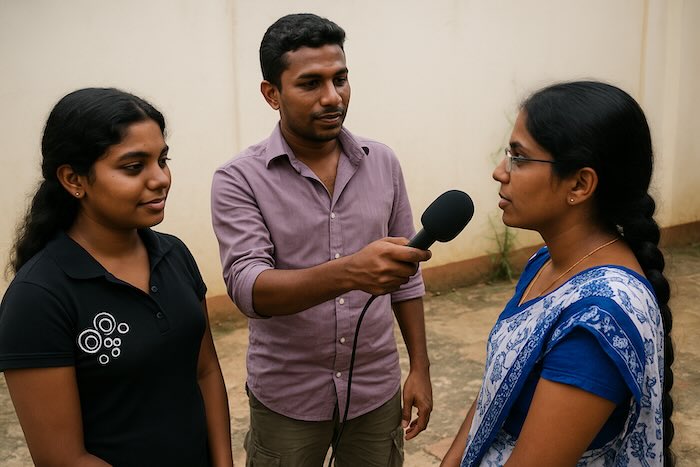 Some interviews don’t have to be a rigid question-and-answer session. A more conversational approach – without asking a single question – can sometimes yield richer insights.
Some interviews don’t have to be a rigid question-and-answer session. A more conversational approach – without asking a single question – can sometimes yield richer insights.
Interviewing – beyond the list
If you are carrying out an in-depth interview with the purpose of digging deep in order to uncover the background to news stories you might want to consider a different approach from asking the six questions recommended for covering breaking news.
Forget writing down a list of questions. Instead, before the interview, jot down a few key words or phrases that represent the main topics or areas you want to explore. These aren’t questions, but rather mental anchors to guide the conversation.
This approach allows you to stay present and adapt to the flow of the discussion rather than spending time mechanically checking off items on a list.
Drawing out the interviewee
Rather than asking direct questions, frame your inquiries as gentle requests or invitations to elaborate. This subtle shift in language can make a significant difference in how the interviewee perceives the interaction. Instead of “What did you learn?”, try:
- “Tell me about…”
- “Talk to me about…”
- “I’m curious about…”
- “Describe to me…”
For example, instead of asking “What are the things you learned?”, you might say, “Tell me about the best thing you learned.” This guides their focus without limiting their response to a bulleted list. Asking for a list often gets you just that – a list – which can be superficial. By encouraging them to delve into a specific aspect, you’re more likely to uncover deeper insights and narratives.
Silence is golden
Once you’ve offered your gentle command, listen intently to the response. This is crucial. When they finish speaking, resist the urge to jump in immediately. Instead, be quiet and wait. Often, people will elaborate further, clarify points, or offer additional thoughts if given the space to do so. This silence is not awkward; it’s an invitation for them to continue.
Recovering your focus
We all have moments where our minds wander. If you realise you weren’t fully listening to an answer, there’s a simple, effective recovery phrase: “Interesting … tell me more.” This not only buys you a moment to re-engage but also encourages the interviewee to expand on their previous statement, giving you another chance to absorb the information.
The non-verbal interviewer
Your presence and demeanour are just as important as your words. While the interviewee is speaking:
- Don’t make a sound: Avoid “uh-huhs,” “hmms,” or other verbal fillers. These can be distracting and interrupt their flow.
- Don’t interrupt: Let them complete their thoughts entirely.
- Don’t be judgmental: Your role is to listen and understand, not to evaluate or critique in the moment.
- Don’t be on their side either: Maintain a neutral stance. Your goal is to gather information objectively.
Instead of verbal cues, utilise silent body language for follow-ups. A nod, an attentive lean forward, or maintaining eye contact can all signal your engagement and encourage them to continue, without breaking their stride. This creates a supportive atmosphere where the interviewee feels truly heard and understood.
Note: This article was originally submitted in English (US) but has been changed to English (UK) with the author’s permission so that it matches the house style of Media Helping Media.








